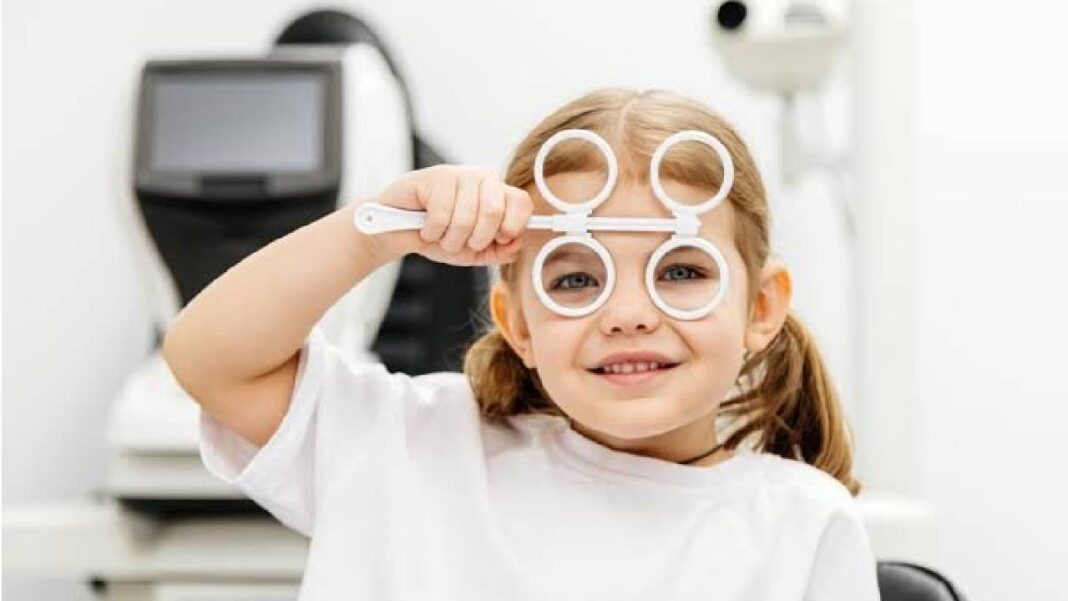We are all parents that make sure to keep up with vaccinations, manage diets, and call the doctor when their child gets sick. However, their overall development cannot be achieved without proper care for eye health. So, when did you last take your child to have their eyes checked?
Ophthalmologists are bringing attention of parents towards their children’s eye health and to start looking for early signs of this cancer. Although rare, retinoblastoma starts as an eye cancer and is the most common intraocular cancer in children. It usually affects kids younger than five years old (mean age of 18 months), and can be treated if diagnosed early on. Saving vision, and sometimes life is possible depending on how advanced the cancer is and how fast the treatment is initiated.
What is Retinoblastoma?
Retinoblastoma is a condition characterized by abnormal tissue growth in the light sensitive portion of the eye known as retina. It is an ocular tumour which in some cases is inherited, but there are also cases where it emerges without any family history. The difficulty is in early detection because it tends to progress before it can be detected. But in instances where it can be detected early, survival rates and possibilities of saving the eye are excellent.
The Significance of Identifying Problems Late
Retinoblastoma is diagnosed late in the majority of cases because individuals are unaware of it and the referrals are late. Parents initially go to general physicians or local clinics where cancer of the eye may not be diagnosed on initial presentation. By the time the child sees a specialist, the cancer may have spread, making treatment more complex.
Retinoblastoma is a disease that is very difficult to control if diagnosed late. Hence, doctors suggest early diagnosis which can successfully save the eye and stop the spread of cancer with the use of chemotherapy, laser and cryotherapy.Enucleation, or the removal of the infected eye, is necessary in advanced cases alone, and the majority of children have normal and healthy lives afterwards.
Early Warning Signs: How to Identify Retinoblastoma
It is important to notice these warning signs because an early diagnosis of retinoblastoma is essential. Parents should be aware that the cancer will not display evident signs until the disease progresses. These are the critical signs to observe:
- Leukocoria (White Reflex): It is the earliest sign and might often be seen in photographs; the pupil has an achromatic reflection instead of the typical red-eye reflection seen in flash photos, here the pupil may look yellowish or white.
- Strabismus (Crossed Eyes): The child might later develop an ocular strabismus, causing the eyes to turn inward or outward
- Vision Impairment: The child may struggle to focus or follow moving objects, and may squint—signs of vision impairment
- Redness and Swelling: If the eyes are rather red or swollen and it doesn’t get better, then it would perhaps be a good idea to see an eye doctor
- Family History: A history of retinoblastoma or other cancers in the family can raise the risk, and therefore such children should be watched carefully.
Treatment Options: What’s Involved?
The management of retinoblastoma is contingent upon the extent, size, and site of the tumor. The treatment options are:
Chemotherapy: The process to shrink the tumor and keep cancer from spreading.
Laser Therapy: It could be used to deactivate cancerous tissue within small tumors.
Cryotherapy: The process of freezing a defined area of a tumor in order to destroy it.
Enucleation: If the cancer cannot be controlled with other treatments, then a surgical removal of the affected eye will be the next step.
Brachytherapy: Here external radiation is used to destroy the tumor cells
Treatment is designed based on the specific needs of each child. With improved medical treatment, children with retinoblastoma in its early stage are likely to keep one or both eyes and live normal lives.
What Parents Can Do
Act Early: Make sure that the child’s eyes are being evaluated as part of the routine well-child check. If anything unusual comes to your attention, seek medical evaluation without delay.
Review Pictures: Look through the child’s recent pictures. A white reflex in all the photographs could indicate leukocoria which is an early manifestation of retinoblastoma.
Seek Eye Care Specific Clinics: A pediatric eye care clinician should be consulted instead of a general one. Seek eye care practitioners; they are the first to assess eye issues.
Spread the Awareness: Let’s spread the message about retinoblastoma in schools, the local community, and to other parents. Information can motivate people to act early which will protect their children.
Let’s make it our responsibility that no child has to suffer vision loss because we didn’t take the opportunity to detect problems early. Spread the message, stay alert, and encourage regular eye check-ups for all children.
(The author, Dr. Simakurthy Sriram is the CMO and Consultant VitreoRetina, at Sankara Eye Hospital, Hyderabad.)




